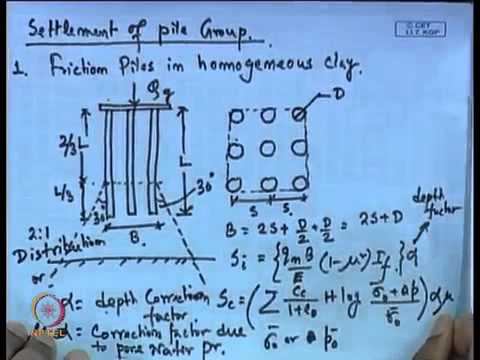Contents
Investopedia requires writers to use primary sources to support their work. These include white papers, government data, original reporting, and interviews with industry experts. We also reference original research from other reputable publishers where appropriate. You can learn more about the standards we follow in producing accurate, unbiased content in oureditorial policy. The ATR was initially developed for use in commodities markets but has since been applied to all types of securities.
Average True Range can be applied to define stop-loss levels. Although it won’t define certain levels, it will help you measure how far the order should be placed. In periods of high volatility, you should place broad stop-loss levels.
Low values of the indicator are typical for the periods of sideways movement of long duration which happen at the top of the market and during consolidation. Wide-ranging days refer to the price range of a stock on a certain day of trading. If it generally has an ATR of close to $1.18, it is performing in a way that can be interpreted as normal.
Professional access differs and subscription fees may apply. Prior to trading options, you should carefully read Characteristics and Risks of Standardized Options. Tuned is not a broker-dealer, exchange, custodian, wallet provider, or counterparty. Tuned is only suitable for investors who fully understand the risk of loss and may experience large drawdowns.
See Indicator Panel for directions on how to set up an indicator — and Edit Indicator Settings to change the settings. The technical storage or access that is used exclusively for anonymous statistical purposes. Tradeciety is run by Rolf and Moritz who have over 20+ years of combined experience in Forex, stocks and crypto trading.

Using this knowledge, you can already try to open and close trades on a demo account or even develop your own trading strategy. However, if you are a beginner, it’s recommended to use proven strategies. A breakout is a market condition when an asset’s price breaks above a resistance line or below a support line. A breakout signals a potential formation of a trend in the direction of the breakout.
When the ATR is low it can be indicative of lower volatility. Tracking ATR as a day trader can be useful for monitoring shifts in volatility and detecting sharp price movements up or down. Before making an investment decision, you should rely on your own assessment of the person making the trading decisions and the terms of all the legal documentation.
The ATR indicator moves up and down as price moves in an asset become larger or smaller. A new ATR reading is calculated as each time period passes. On a one-minute chart, a new ATR reading is calculated every minute.
ATR is very useful for stops or entry triggers, signaling changes in volatility. Use a multiple of ATR, such as 1.5 x ATR, to catch these abnormal price moves. An expanding ATR indicates increased volatility in the market, with the range of each bar getting larger. A reversal in price with an increase in ATR would indicate strength behind that move.
What is a good number to use for an average true range indicator?
Traders often mistakenly believe that volatility equals bullishness or bearishness. Volatility does not say anything about the trend strength or the trend direction, but it tells you how much price fluctuates. As we have seen above, the ATR just looks at how far price swings and not how much it actually moves into one direction. The position ig sentiment indicator trader is likely to “ride the trend” up and down during a stock’s cycle as long as the trend is intact. Swing trading would be trading the up or down movements within the stock’s cycle. The ATR is designed to help smooth out daily fluctuations, so a long lookback might cause the swing trader to miss out on some, well, swings.

The ATR is commonly used as an exit method that can be applied no matter how the entry decision is made. One popular technique is known as the “chandelier exit” and was developed by Chuck LeBeau. The chandelier exit places atrailing stopunder the highest high the stock has reached since you entered the trade. The distance between the highest high and the stop level is defined as some multiple multiplied by the ATR. Using 14 days as the number of periods, you’d calculate the TR for each of the 14 days.
Before making decisions with legal, tax, or accounting effects, you should consult appropriate professionals. Information is from sources deemed reliable on the date of publication, but Robinhood does not guarantee its accuracy. Now, add up the results from the 14 days, then divide that total by 14 to get the average. To determine exness fpa reviews the trailing stop level, you should check the current ATR value. The idea is that you multiply the ATR value twice and place the stop-loss level at a distance equal to doubled ATR from the entry point. For example, if you trade in an uptrend, you should place a stop loss at a distance twice the ATR below the entry point.
Average True Range (ATR): What Is It and How Does It Work?
Despite being developed before the computer age, Wilder’s indicators have stood the test of time and remain extremely popular. We rely on reader support and your contribution will enable us to keep delivering quality content that’s open to everyone across the world. A market will usually keep the direction of the initial price move, though this is certainly not a rule. During periods of little volatility, the ATR decreases in value.
To adjust the period setting, highlight the default value and enter a new setting. SharpCharts also allows users to position the indicator above, below or behind the price plot. A moving average can be added to identify upturns or downturns in ATR. Click “advanced options” to add a moving average as an indicator overlay. A low value of average true range indicates small ranges in a number of consecutive periods.
- The true range number can be positive or negative but to find ATR, you’ll need to use the greatest value.
- What the ATR is really good at is identifying potential explosive breakout moves.
- The Stop-and-Reverse mechanism assumes that you switch to a short position when stopped out of a long position, and vice versa.
- Second, ATR only measures volatility and not the direction of an asset’s price.
- You went long at support and you’re not sure where to take profits.
Average true range values are generally calculated based on 14 periods. The period can be monthly, weekly, daily, or even intraday. The Average True Range is a technical indicator that measures the volatility of an asset’s price.
ATR Trailing Stops Formula
This shows that knowing the overall higher time-frame situation is critical to understand what to expect on the lower time-frames. A low DATR typically leads to lower volatility on the shorter time-frames and volatility spikes aren’t sustainable. Combining the ATR with the RSI can tell you so much about the market you are in.
Content intended for educational/informational purposes only. Not investment advice, or a recommendation of any security, strategy, or account type. Price points that will ensure ninjatrader forex brokers they take full advantage of a trending market with minimal risk exposure as possible. Access to real-time market data is conditioned on acceptance of the exchange agreements.

It usually represents the 14-day moving average of the difference between the daily high and low price. But if the previous close was outside this range, that level can be used in place of the daily high or low. For example, if a stock price had a daily low of $8 and a daily high understanding stock quotes of $10, its range would be $2 (between $8 and $10). Instead of 14 days, analysts can use a different timeframe for periods (e.g., weekly, monthly, annually) or even a different number of periods. Traders sometimes use the ATR to determine when to buy or sell an investment.
Top 5 Stocks to Look for in 2023
It’s possible for volatility to increase by jumping up and down without breaking out in a new fundamental direction. For example, assume a stock is trading around $40 and that the highest price in the last three weeks was $43, with an ATR of $2. A chandelier exit strategy might suggest setting a stop-loss order at three times the ATR, which is $6. This situation would call for placing a stop-loss at $37 ($43 minus $6). If the price increases to $45 tomorrow, the stop-loss would move up to $39. The stop-loss should not decrease if prices fall, otherwise that would defeat the purpose of the strategy to limit potential losses.
The final piece to the strategy is to update the exit point if prices climb — called a trailing stop-loss. That way, the stop price always hangs off the highest point in the stock’s recent trading pattern. Traditionally, analysts use the 14-day moving average, but they could also use a longer or shorter time frame. There are also different methods of calculating the moving average.
How to Use ATR in Trading
The low average true range values imply lower price volatility. If the average true range value remains low for some time, it may indicate the possibility of a reversal or continuation move and an area of consolidation. A trailing stop-loss is a way to exit a trade if the asset price moves against you but also enables you to move the exit point if the price is moving in your favor.
Especially when it comes to stop loss, take profit and trade exit improvements, the ATR can be of great help. The current ATR is $2.05, meaning that over the last 14 days this stock fluctuated, on average, $2.05 from one day to the next. As a result, if you bought the stock at its current price and you used a multiplier of 2x, you might set an initial stop at $4.10 (that is, 2 x $2.05) below the entry price.


